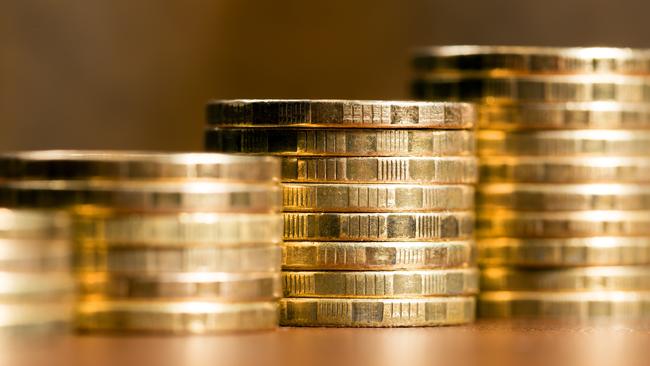Cash savings come back into fashion as RBA hikes interest rates
Successive interest rate rises are making cash attractive again for savers and investors – the best deals are at the minor banks.

The latest lift in official cash rates marks a turning point for savers and cash investors: many saving rates should now reach around 2 per cent in the coming weeks.
For savers willing to lock up money in term deposits the rates may climb closer to 3 per cent – a point at which “cash” investing starts to become more attractive.
At these levels the returns are well below current annualised inflation at 6.1 per cent. But investors will be betting that inflation may have peaked, while the government guarantee on bank deposits means the investment is risk free.
A swing back towards cash has emerged in recent data, including bank deposits returning as an increasingly popular choice in the latest consumer sentiment index.
The least rewarding end of the cash market is what the banks categorise as “ongoing savings” accounts – that is, on-call savings accounts with no strings attached.
The average rate for ongoing savings accounts remained well under 1 per cent, at a miserly 0.62 per cent, before the latest official rate lift.
Savers with most of their funds stuck in ongoing savings accounts were highlighted by Treasurer Jim Chalmers on Tuesday: “Savers have been the principal victims of interest rates when they’re incredibly low and they should be the beneficiaries of rising rates,” he said.
Though Chalmers has publicly pressured the major banks to pass on the latest 0.5 per cent change in full, there is little evidence they will do so.
Consumers looking for higher on call rates are taking up bank special offers which impose criteria such as minimum deposits or set levels of activity. The average among so-called promotional accounts where savings bonuses are involved is 1.26 per cent.
To get returns of more than 2 per cent generally still requires locking up money for lengthy periods – the average one-year term deposit is 2.3 per cent.
Among the major banks CBA is offering 2.5 per cent for 15 months to its existing customers with a $5000 minimum deposit
Occasionally such term rates can be significantly higher if the bank is a minor player – for example the new business bank, Judo, is offering 3.45 per cent for one year.
For cash investors the dilemma is whether to take the offers on term deposits or wait to see if at-call rates raft up in line with official rates as expected – NAB for example says that in seeking a return to 2-3 per cent inflation the RBA will likely require a 2.6-2.85 per cent cash rate range. Official rates now sit at 1.85 per cent.
Paradoxically, the higher cash rates climb the less Australians are willing to save – the national savings rate had reached a sky high level of 23.7 per cent during the pandemic, it has since fallen to around 11 per cent and could drop below 7 per cent in the months ahead, according to CBA’s senior economist Belinda Allen.
(The savings rate in the National Accounts measures the household savings to income ratio – it is an attempt to capture how much income in a household is saved rather than spent.)
The sliding pattern in household savings is similar all over the world with the US reporting a national savings rate this week of just 5 per cent, dramatically down from a stunning 31 per cent during the depths of the pandemic.
Meanwhile, if economists are suggesting that inflation may inch back towards 4 per cent next year, then cash rates could start to promise a guaranteed positive return even on an inflation-adjusted basis.
(Bank deposits are guaranteed to the tune of $250,000 per account holder per bank.)
According to Allen at CBA: “Our data show that there appears to have been some reduction in actual savings levels over Q2, particularly for generations apart from Gen Z. The decline was largely due to stronger spending compared to income among older age groups.”
However it is unclear if this will remain the case for long: “We just have not had these kinds of conditions before so there is no way of forecasting what’s next,” says Allen.




To join the conversation, please log in. Don't have an account? Register
Join the conversation, you are commenting as Logout